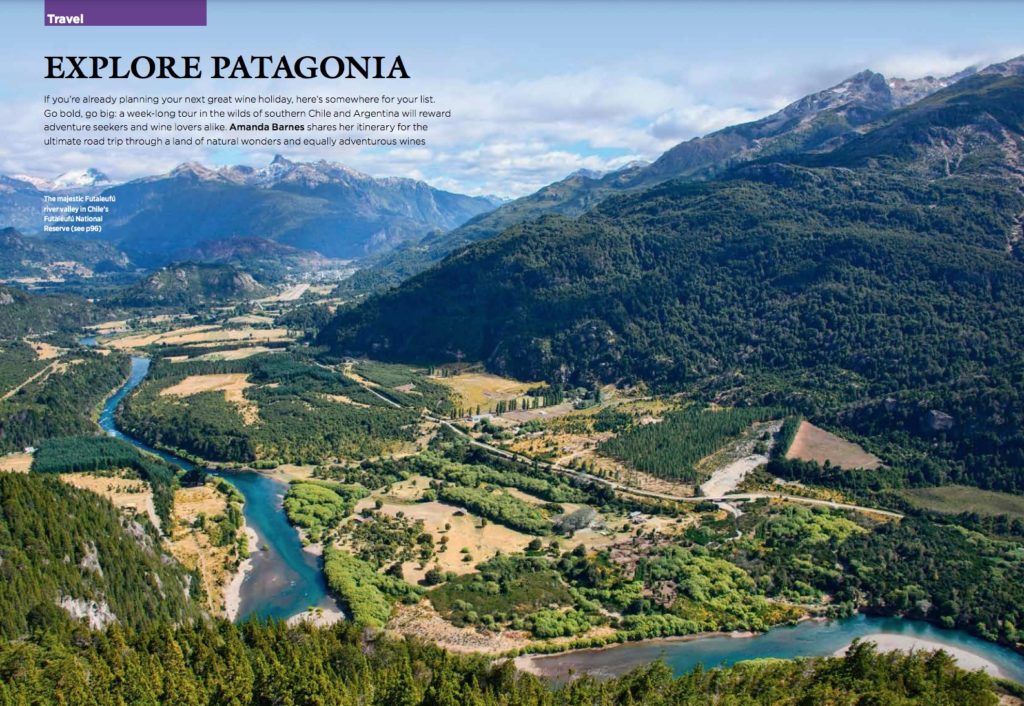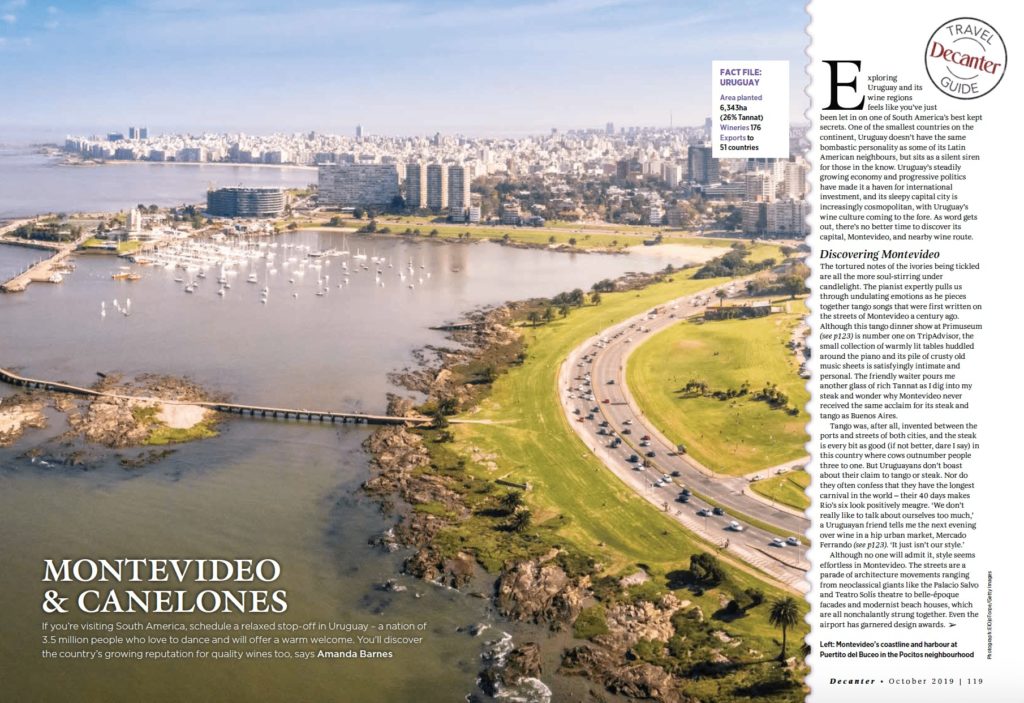Decanter: Explore Patagonia wine routes

Published in Decanter, December 2020 If you’re planning your next great wine holiday, here’s somewhere for your list. Go bold, go big: a week-long tour in the wilds of southern Chile and Argentina will reward adventure seekers and wine lovers alike. Amanda Barnes shares her itinerary for the ultimate road trip through a land of […]
Exploring Montevideo & Canelones in Uruguay

Written for Decanter Magazine, October 2019 Exploring Uruguay and its wine regions feels like you’ve just been let in on one of South America’s best kept secrets. One of the smallest countries on the continent, Uruguay doesn’t have the same bombastic personality as many of its Latin American neighbours but sits as a silent siren […]
Down where it’s wetter: Argentina’s wetlands

The best way to see the Ibera wetlands is from the sky. At the cockpit window of a light aircraft, the flooded plains of Argentina’s next national park roll out before us like a carpet threaded with blues, greens, and gold. A single white boat appears like a toy or maybe an abandoned piece of […]
Mr & Mrs Smith Review – Explora Atacama

Published on Mr & Mrs Smith, January 2018 I realise that Mr Smith and I aren’t quite as adventurous as everyone else visiting Explora when, after the long, dusty road from the airport, we want to get acquainted with the barman before the mountain guide. ‘Of course,’ smiles the manager who greets us on arrival, […]
36 hours in Mendoza: Wine Lover
When you come to the land of sunshine and wine, there’s no excuse not to emerge yourself in the juice of the gods for the entire length of your stay. Whether you are a novice or a complete oenophile there are plenty of indulgent wine related activities to keep you merry for your entire trip. […]
Touring Sicily’s vineyards…

Written for the Circle Update, Circle of Wine Writers Tasca d’Almerita “You are home!” Conrad Maurigi said as we arrived. “If only!” would have been my response, not from being tired on last stop of the week but because Tasca d’Almerita is a place of sublime beauty. Lolloping hillsides striped with green vines and studded […]
Chainsaws in Uruguay and the new ‘alternative tourism’
A bare-chested 70-year-old man burst into our room, shouting something in Spanish and waving his arms. It was 4am. My boyfriend and I had been asleep: it was our first night couchsurfing in a stranger’s house. His voice boomed around the dark room for a minute and then he slammed the door shut and stormed […]

